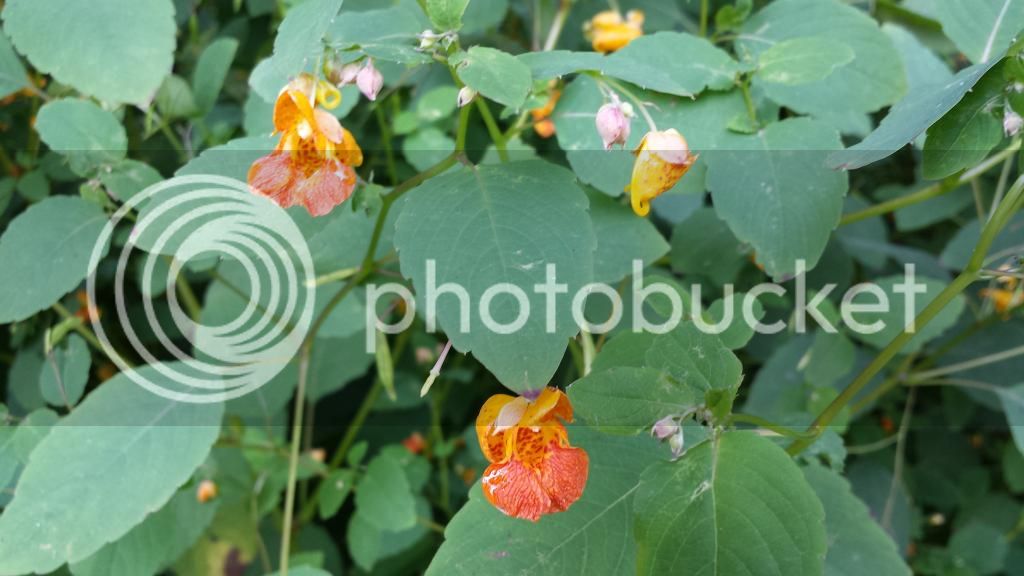Jewelweed, Poison Ivy Treatment from Nature
Jewelweed
Impatiens capensis
The Jewelweed plant has been used for centuries in North America by Native Americans and Herbalists, as a natural preventative and treatment for poison ivy and poison oak; and is a folk remedy for many other skin disorders .
Jewelweed is best known for its skin healing properties. The leaves and the juice from the stem of Jewelweed are used by herbalists as a treatment for poison ivy, oak and other plant induced rashes, as well as many other types of dermatitis. Jewelweed works by counter-reacting with the chemicals in other plants that cause irritation. Poultices and salves from Jewelweed are a folk remedy for bruises, burns, cuts, eczema, insect bites, sores, sprains, warts, and ringworm. Read on to learn to make your own poison ivy treatment ice cubes with Jewelweed.
Jewelweed is a smooth annual; 3-5 ft. Leaves oval, round- toothed; lower ones opposite, upper ones alternate. A bit trumpet shaped, the flowers hang from the plant much as a jewel from a necklace, Pale Jewelweed has yellow flowers, Spotted Touch-Me-Nots have orange flowers with dark red dots. The seeds will 'pop' when touched , that is where the name Touch-Me-Nots came from. The Spotted Jewelweed variety is most commonly used for treating poison ivy rashes although the Pale Jewelweed may also have medicinal properties .
Jewelweed blooms May through October in the eastern part of North America from Southern Canada to the northern part of Florida. It is found most often in moist woods, usually near poison ivy or stinging nettle. It is commonly said that wherever you find poison ivy, you will find Jewelweed - however this is not true as Jewelweed will not grow in dry places for long, and does not thrive in direct sunlight. Poison Ivy will grow in sun or shade. Jewelweed often grows on the edge of creek beds. There is plenty of jewelweed in the wild, and it is not hard to find once you learn to identify it. I recently read on a newsgroup that the garden variety of impatiens has the same properties, though not as concentrated. However, the garden variety is much more suitable for cultivation as its growth is easier to contain.Jewelweed Pictures by
Karen Bergeron Copyright 2000-2011.
 [/URL]
[/URL] [/URL]
[/URL] [/URL]
[/URL] [/URL]
[/URL] [/URL]
[/URL] [/URL]
[/URL]

